What Is a Hook in Golf: A Guide to Using this Powerful Shot
- Last updated on July 10, 2023
- Toni Benedito
- Golf Equipment & Gear, Blog
A hook in golf refers to a sharp ball curve to the left (for right-handed players) or right (for left-handed players) instead of a straight or slight curve. It often results from factors like an incorrect grip, improper body positioning, and overactive motion during impact. Fixing hooks involves mastering a powerful and secure grip, proper stance balance, weight transfer, and aligned swing mechanics. Understanding and addressing hook issues are essential for improving golf performance.
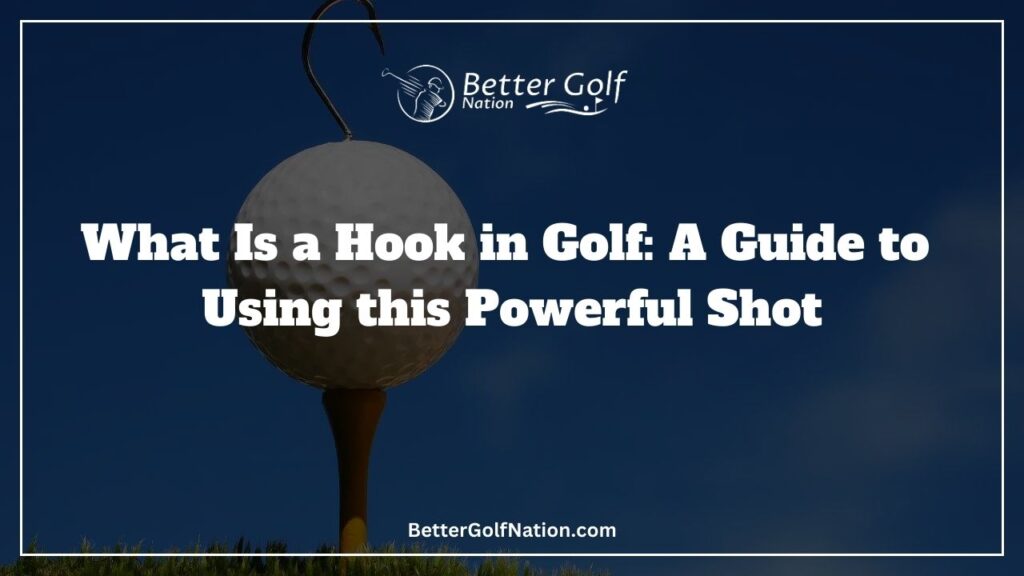
Golf is a complex sport that requires a combination of physical and mental skills. Whether you’re a beginner or an experienced player, there’s always something new to learn about golf terminology, techniques, and strategies.
One of the most important concepts in golf is the hook shot. So, what exactly is a hook in golf?
In simple terms, a hook refers to an excessive ball curve to the left for right-handed players (or to the right for left-handed players). This means that instead of flying straight or curving slightly to one side, the ball takes a sharp turn in the opposite direction, often ending up out of bounds or in an unfavorable position on the course.
There are several factors that can cause a hook shot in golf. One of the most common causes is an incorrect grip. If you have a tight grip or too much pressure on your hands and wrists when you swing, it can lead to an overactive motion during impact, causing your clubface to close and produce hooks.
Another cause of hooks is improper body positioning during your swing. Your torso and chest area should be aligned correctly with your arms and club throughout your swing movement. A neutral hand alignment also plays an important role in proper club control, which helps prevent hooks from occurring.
"In simple terms, a hook refers to an excessive ball curve to the left for right-handed players or to the right for left-handed players."
While some professional golfers use hooks as part of their strategic game plan, for many amateur golfers, having control over their shots is essential for success on the course. Learning how to properly hold the club with a powerful but secure grip can fix many underlying problems leading to hooks.
If you’re struggling with hook shots during your games but don’t know how to correct them effectively, drills can help address issues such as stance balance and weight transfer while taking into account proper swing mechanics leading up to the impact point, making sure all limbs and clubs are aligned accordingly. Understanding what causes hooks in golf is crucial for improving one’s game performance on courses.
Taking steps towards achieving correct technique and swing motion control can help mitigate the negative effects of hook shots on your overall game. With knowledge, practice, and persistence, you can become a skilled golfer with a neutral position and the correct golf hook.
Check out this video below from Rick Shiels Golf Youtube channel:
Understanding Golf Terminology
Golf is a sport with its own language, and for those new to the game, it can be challenging to understand all of the terminology. It is essential to learn how to play the game effectively.
The grip is one of the most important factors in golf, as it determines how you control your club’s motion during your swing.
A full grip refers to holding the club in a way that allows both hands to touch while completing your hand position on the club. Golfers can use a tight grip or modify their grip by adjusting their fingers’ position on the club, such as by placing their index finger on the right side instead of wrapping around with their left hand.
Swing movement refers to how you move your arms and club during your swing.
The core region, or torso, plays an essential role in determining how much power you generate during your swing. By rotating your core region correctly, you can achieve greater distance and accuracy when hitting shots. The most critical part of hitting a hook shot is getting your clubface in line with where you want the ball to go at impact. The ball curving left means that you are most likely hitting a hook shot if you’re right-handed, or if you’re left-handed, curving right.
Clubhead position at impact plays an essential role in determining whether or not you are going to hit a hook shot. Fixing a hook involves modifying various aspects of your swing technique, such as changing the clubs’ angle at impact, adjusting the completed grip, modifying arm and club motion, and attaining a non-biased grip on the handle.
Mastering golf jargon is crucial for new players who want to improve their skills quickly and efficiently.
Understanding key phrases such as the lead finger, concluded hand position and modified grip will help players manipulate their swings for better results. Knowing terms like finished hold and concluded hand positions will give them insight into what they need to do if they are dealing with a hook when they are on the course.
Enjoying this article? Read more:
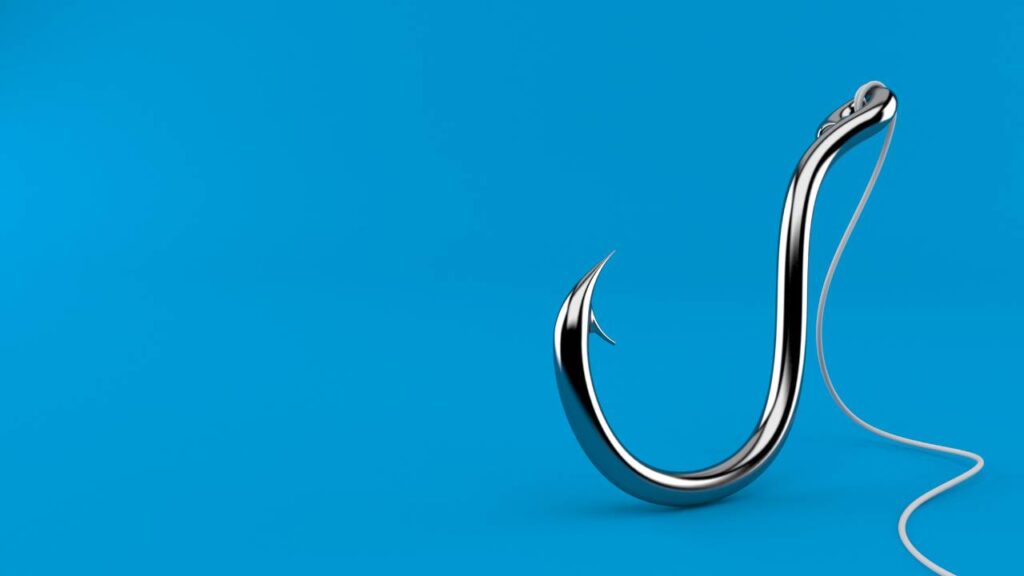
What is a Hook in Golf?
A hook is a type of shot in golf in which the ball curves sharply from right to left (for a right-handed golfer) or from left to right (for a left-handed golfer). It’s a common problem for many golfers and can result in lost balls, penalties, and frustration on the course.
Understanding what causes a hook and how to correct it can help improve your game. A hook occurs when the clubface is closed at impact, meaning it points to the left of the target (for a right-handed golfer). This causes an excessive ball curve that makes the ball spin more than intended. This is different from a slice, which occurs when the clubface opens at impact and sends the ball spinning off to the right.
Many factors can contribute to a hook, including swing mechanics, grip, and body position. Having a tight or settled grip with your upper torso leaning towards your target often results in excessive curvature in your shots.
This tightening leads to too much hand action during your swing movement, resulting in an over-release of energy upon contact and consequent hooking of the ball. Additionally, if your clubface is closed at address due to incorrect positioning or grip issues like having your lead finger too far around on top of your fingers instead of being placed on its side touching the thumb pad for a neutral position, you are bound to produce hooked shots.
"Many factors can contribute to a hook, including swing mechanics, grip, and body position. Having a tight or settled grip with your upper torso leaning towards your target often results in excessive curvature in your shots."
The key to preventing or correcting hooks is to have proper swing mechanics and solid hand position throughout their stroke. One way golfers try to prevent hooking balls is by using non-biased grips, where they place their hands even with each other without any twisting tendencies that cause hooks.
This helps ensure that you’re not overly relying on one hand over another for power during the stroke, which eventually leads to more balanced swings and avoids excessive curvature tendencies. Correctly adjusting your clubhead position and swing also plays a critical role in forming correct golf hooks because if you have a good clubhead position and swing, you are able to control the clubface’s direction much better.
This will allow you to hit straighter shots and prevent excessive spin. A hook is an issue that many golfers face.
It occurs when the clubface is closed at impact and causes the ball to curve sharply from right to left (for a right-handed golfer). There are several factors that contribute to hooking balls, including grip, swing mechanics, body position, etc.
With some practice and proper technique adjustments, like a neutral grip position or maintaining solid hand positions in your stroke, you can help prevent or correct this problem for golfers of every skill level.
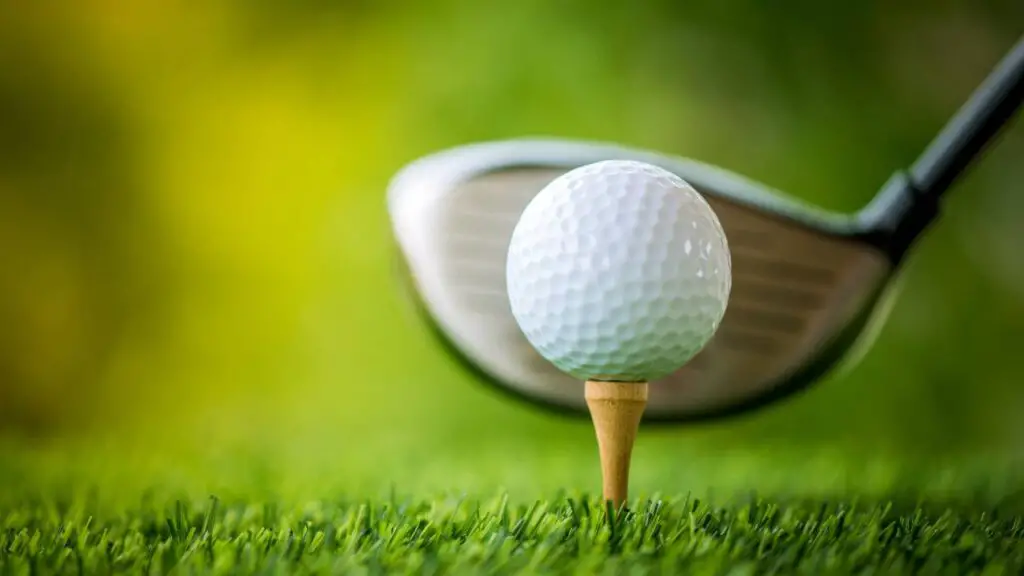
What Causes a Hook in Golf?
One of the most common causes of hooks in golf is improper clubface alignment. When the clubface is closed or facing left of the target line at impact, it can result in a hook. The opposite can also cause a hook—an open or right-facing clubface.
Another common cause of hooks is an incorrect swing path. A swing path that approaches the ball from too far inside or too far outside creates a side spin on the ball, causing it to curve excessively to the left or right. The grip can also play a crucial role in causing hooks in golf.
An overly tight grip on a golf club can create tension throughout your body, particularly in your hands and forearms, which affects your swinging action and results in hooks. Additionally, an incorrect hand position on the grip, such as having your hand on the right side, can lead to a hook shot.
The upper torso also plays an essential role in creating hooks; if you turn through impact with your upper body before your arms have finished their motion, it may cause you to come across your swing plane and result in a hooked ball.
Understanding what causes hooks will help you pinpoint areas where you need improvement and get started with correcting them effectively. Often, finding middle ground with grip pressure, adjusting grip, and concluding hand position for optimum placement while keeping a secure hold assists hook correction.
Adopting drills specifically designed for fixing a hook, such as using full grips without having any trigger fingers or ensuring that you’re maintaining solid hand positions, will allow for correct swinging action while managing tightness appropriately.
Identifying a Hook in Your Swing
Identifying a hook in your golf swing can be challenging, especially for beginners who are still mastering the fundamentals of the game. However, knowing what to look for can help you diagnose and correct the problem before it becomes a habit.
The hook is characterized by a shot that curves sharply to the left (for right-handed golfers) and often ends up in rough or out-of-bounds territory. One of the most common causes of a hook is an incorrect grip.
A full grip should have all ten fingers touching the club, with the top hand’s pinkie finger resting in between the bottom hand’s index and middle fingers. To check if your grip is contributing to your hook, pay attention to your hand positions at address and impact.
Your hands should be in a solid position with no visible movement throughout your swing. Another possible cause of a hook is an incorrect stance or posture at setup.
Your torso should be angled slightly towards the ball, with your feet shoulder-width apart and your knees slightly flexed. A centered position over the ball will allow you to make solid contact and prevent unnecessary movement during your swing.
A change in hand position during your swing can also lead to a hook shot. Keep both hands firmly on the club throughout your swing movement, paying particular attention to maintaining correct positioning through the impact area, where both arm and shaft must form a straight line instead of creating any angle.
"A full grip should have all ten fingers touching the club, with the top hand's pinkie finger resting in between the bottom hand's index and middle fingers."
Pay attention to how tightly you hold onto the club with each supporting finger on its respective side, creating a secure hold without any tension either from the side wrist area or from the underside thumb area, through which the pressure point creates unwanted effects leading towards inconsistency across different shots taken during playtime.
Identifying a hook in your golf swing requires careful observation and self-awareness about technique fundamentals that lead to consistent performance on a course at all times, irrespective of varying conditions or situations faced during playtime.
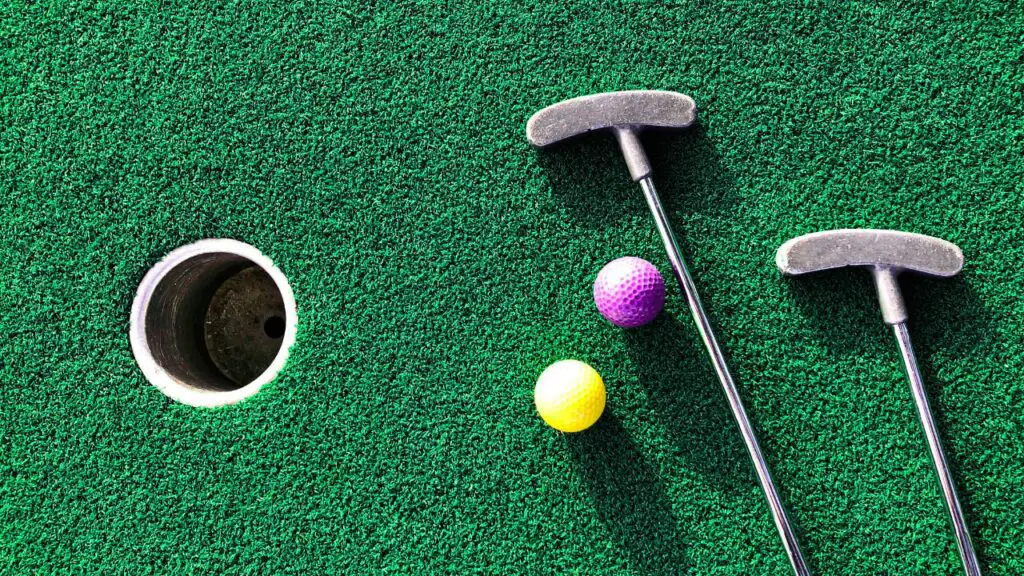
The Impact of a Hook in a Golf Game
The impact of a hook in golf can have a significant effect on your game. It can cause you to lose distance and accuracy, ultimately leading to a higher score. If you find yourself consistently hooking the ball, it’s essential to understand how this shot affects your game.
One of the most significant impacts of a hook shot is that it reduces your distance. When you hit the ball with a hook, it loses its momentum and curves off course. This curving motion causes the ball to move towards the rough or out-of-bounds areas, reducing your distance and increasing your chances of losing strokes on that hole.
Another impact of a hook shot is that it can result in lost accuracy. A hooked shot often results from poor hand positioning or an incorrect swing technique. This poor form makes it difficult for you to control where the ball goes once it’s in flight, which can lead to missed fairways and greens.
A hooked shot also affects confidence levels on the course. Hooking shots consistently can be frustrating and demoralizing, leading to negative self-talk and decreased motivation levels during future games or practice sessions. Having a consistent hook in your game can affect other parts of your swing as well.
You might adjust other parts of your swing to compensate for this issue, such as changing grip or club control, which ultimately leads to more bad shots.
Understanding how an unwanted hook affects one’s game can be vital to performance improvement. Therefore, it’s necessary to learn proper hand positioning and grip techniques while practicing them regularly to eliminate any hook tendencies from our swings over time
How to Correct a Hook
One of the most common golf problems among amateur golfers is hooking the ball. The good news is that there are ways to correct a hook shot, and with some practice, you can fix this problem.
- One technique for correcting a hook shot is to modify your grip. A non-biased grip can help fix your hook shots. To achieve this, slightly adjust your grip so that your hand comes off the club’s buttress and points more toward your chest area than usual. This adjustment will help you have more control over where your clubface contacts the ball during impact.
- Another approach that can help fix hooking is modifying your swing movement. Golfers need to focus on their upper torso as well as their chest area when swinging. Try sliding or shifting your shoulders forward slightly towards the target before starting the downswing while keeping all core regions engaged, then rotate around them when starting the downswing, keeping all core regions tight until follow-through.
Both will help eliminate any rotation or curves within the swing movement. A firm grip on the club can also assist in correcting a hook shot.
When holding onto the club, make sure that it feels secure in both hands with no slipping; use full grip pressure but do not squeeze too tight because this could lead to tension within one’s arms, which may cause unintentional manipulation of the swing path, which could produce undesired results.
"A firm grip on the club can also assist in correcting a hook shot. When holding onto the club, make sure that it feels secure in both hands with no slipping....."
- Another way you can correct a hook shot is by working on maintaining neutral hand alignment throughout the swing so that there isn’t too much pressure put on any one finger or side of the hand, causing unintentional manipulation of clubhead position during contact with the ball and leading you back into accidentally hooking.
Fixing a hook in your golf game is possible. While these tips may not work instantly, with some practice, you can gradually improve your hooks and get more accurate shots.
Remember to focus on the hand and club alignment, chest area during swing movement, modifying grip, and maintaining a firm grip on the club to help prevent or reduce any unintentional hooking of the ball.
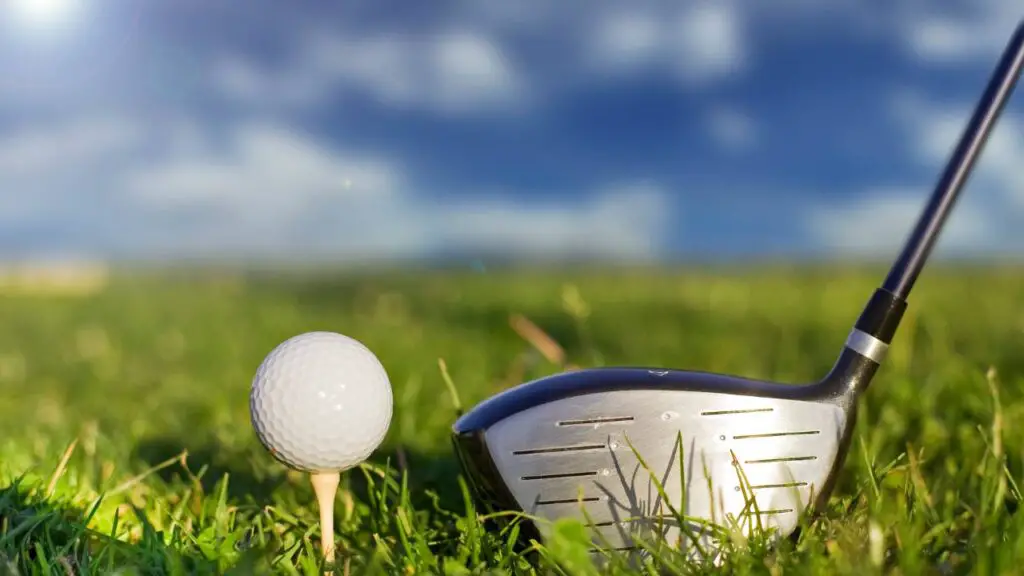
Drills to Prevent and Correct a Hook
If you’re a golfer struggling with hooking the ball, there are various drills you can practice to prevent or correct it. Here are a few ways you can do this:
- Adjusting your grip on your golf club
A tight grip on the club can cause you to hook the ball, so you should try using a more neutral grip instead. To do this, place your index finger on the right side of the club’s handle, and then adjust your hands accordingly until they feel comfortable.
- Ensuring a solid hand position throughout your swing
Golfers who struggle with hooks tend to be too strong in their core region, leading to an overactive hand movement that causes hooking. By focusing on maintaining firm hands and not allowing them to rotate too much through contact with the ball, you can regain control of the clubface and reduce spin.
- Club control
This crucial for solving any issues related to a hook shot in golf. To improve this aspect of your game, try practicing drills that focus on controlling the face of the club during swings. For instance, you could work on improving arm and shaft synchronization by practicing hitting balls with only one arm or using light weights.
- Work on upper physique rather than just focusing solely on hand movement
This means targeting muscles in both your middle ground (back core) and upper extremities while holding a golf club at different angles as well as positions such as overhead or underhand swings.
No one method works best for everyone when it comes to hook correction; it’s all about finding what suits you best through trial and error until you find what works for you specifically!
Professional Golfers Known for Their Hook Shots
Some professional golfers are known for their impressive hook shots. These players have mastered the art of curving the ball in a way that can take their game to the next level. Here are a few famous golfers who are known for their hook shots:
He has been able to use this shot to his advantage, especially when faced with difficult shots on the course. His dominant left hand and finger closest to the target played a significant role in executing this shot. Middle-ground positioning and the club’s angle at impact also contribute to delivering perfect hooks.
Another golfer who is adept at hitting hooks and is also a left-handed golfer. His hand positioning and upper physique provide him with an edge in executing this shot. He uses his clubhead position and supporting finger effectively while leading with his right index finger to deliver an incredibly accurate hook shot.
When it comes to strong grip and non-biased grip, Dustin Johnson has perfected both styles of hand grip. However, he mostly relies on a strong grip when hitting hooks so that he can generate more power in his swing’s impact area. To achieve this, Dustin changes his hand position slightly by placing his lead finger further down on the club.
Rickie Fowler has worked hard on correcting any issues with his hook swing over time. He learned from experts’ mistakes that having too much torso rotation would lead to problems controlling distance and direction when hitting hooks. To correct this issue, Fowler made changes to how he grips the club and focused on improving body alignment during swings.
Overall, these golfers have shown that mastering the hook shot can elevate your game significantly if done correctly. Paying close attention not only to hand positioning but also to other aspects such as clubhead position or torso rotation while swinging provides them with an edge over other players on the course!

Conclusion
Understanding what a “hook” is in golf is essential for any golfer looking to improve their game. A hook can be a valuable tool in the golfer’s arsenal if used correctly, but it can also quickly become a liability if not managed properly.
By identifying the causes of a hook, golfers can begin to take steps toward correcting and preventing it from happening. One of the first things that golfers should do when addressing their hook is to check their grip.
A non-biased grip with a neutral hand alignment and full grip pressure applied by the lead hand’s last three fingers and pad of the thumb combined with minimal pressure from the trail hand will help them avoid unwanted hooks. Golfers should also try changing their hand position on the club to modify their grip until they find one that works best for them.
Once golfers have settled on an effective grip, they can start working on adjusting their swinging action. To eliminate unwanted hooks, golfers should focus on keeping their clubhead position square at impact while maintaining a centered position over the ball throughout the swing.
By using drills specifically designed to prevent hooks, such as swinging practice swings with the right index finger touching the left fingers or hitting balls off-center, golfers can build muscle memory of correct swing form. It’s important that golfers avoid becoming overly fixated on eliminating hooks while playing.
Instead, they should work towards mastering this powerful shot by practicing proper technique until they feel confident in its execution and understand when it’s appropriate to use it during a game.
Overall, learning about what a hook is in golf takes time and dedication, but conquering this shot will greatly improve your overall game performance by giving you more options when approaching different course scenarios.
FAQs
Hooking moves the ball from right to left for a right-handed golfer; slicing moves it from left to right.
A draw is a controlled right-to-left shot, while a hook is a more severe and often unintentional curve in the same direction.
Common causes include an overly strong grip, an improper stance, or a swing path that’s too far inside out.
Yes, a steep swing can cause the clubface to close, creating a hook spin.
Yes, a shaft that’s too flexible can exacerbate a hook by lagging behind, closing the clubface at impact.
Alter your grip, refine your stance, and perfect your swing path. Consider equipment adjustments as needed.
Yes, moving your hands slightly towards the target (weakening your grip) can help prevent the clubface from closing too early.
Good balance ensures a consistent swing path and clubface alignment, which can help avoid hooks.
Share this Post
Toni Benedito
Keep Reading
Follow Us
Recent Posts

How Do Pro Golfers Get Paid? The Business of Golf
Professional golfers get paid both before and after tournaments. Before a tournament, they receive appearance fees, sometimes exceeding $1 million, to attract top players. After the tournament, earnings depend on their placement, with the PGA

How Much Do Golf Players And Pros Make? You Won’t Believe It!
Professional golfers earn substantial incomes through tournament winnings, sponsorship deals, and endorsements. Top players on the PGA Tour can make millions annually, with significant earnings from prize money and lucrative brand partnerships. For example, Rory

The Shocking Cost: How Much Does It Cost to Fly with Golf Clubs?
Flying with golf clubs can be a hassle, but it’s worth it for avid golfers. Costs vary by airline, ranging from $30 to $150 per way. Southwest Airlines offers a generous policy, allowing one set

Why Do Golfers Tape Their Fingers Before Hitting the Course?
Golfers tape their fingers to prevent injuries from repetitive motions, provide support for existing injuries, and improve grip comfort. It’s a popular technique among amateurs and pros alike, offering a lightweight and effective solution compared

How Much Does a Round of Golf Cost? Are You on Par?
The cost of a round of golf varies widely based on factors like course type, location, and time of play. Public courses typically range from $30-$100 per round, while exclusive ones like Augusta National or

Hidden Fees: How Much Does It Cost To Rent a Golf Cart
Wondering how much it costs to rent a golf cart? Explore factors like location, rental duration, and cart type impacting prices. Daily rates range from $50 to $80, while weekly rentals can vary from $200
Table of Contents







